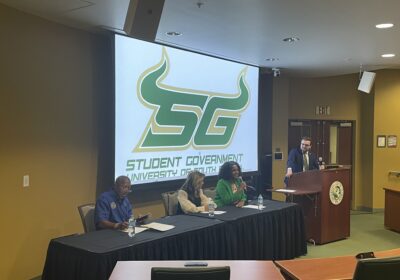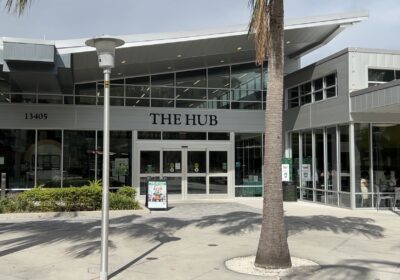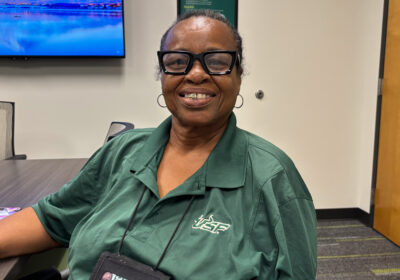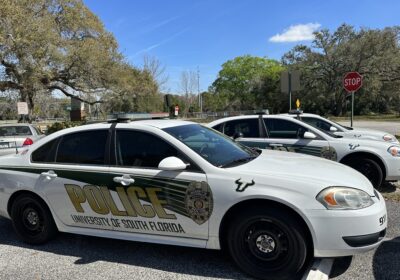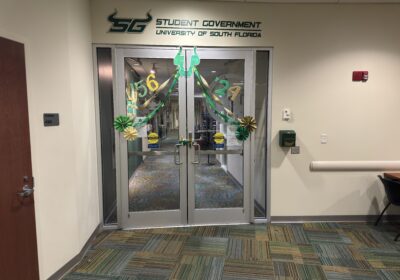Medical students organize virtual stem cell drive in minority communities

Inspired by his mother’s battle with blood cancer, Anosh Dadabhoy, a first-year medical student, decided to address challenges associated with minority representation among bone marrow registries in a virtual platform in light of COVID-19.
His mother’s fight with cancer consequently led Dadabhoy, alongside eight other medical students from the Morsani College of Medicine, to organize a virtual drive for stem cell donors to address existing disparities among minority groups as part of a leadership development project assigned by the college.
In partnership with Be The Match, a nonprofit organization dedicated to matching marrow donors with patients in need, the drive will focus on raising awareness about health disparities to encourage individuals across the Tampa Bay region to participate in the registry.
“When I told my group about my desire to address disparities in the donor registry, they overwhelmingly supported the idea,” said Dadabhoy. “We wanted to register as many people in [the Tampa Bay region] to improve the health of our community and help address some health disparities particularly in our area.”
The project is being implemented by the Florida branch of the Icla da Silva Foundation, a nonprofit bone marrow registry working closely with patients from Hispanic, Asian, African and Native American communities.
“When it comes to patients [with] life-threatening blood diseases and blood cancers, there exists a remarkable racial and ethnic disparity in terms of access to a stem cell or bone marrow transplant,” said Clara Freedman, first-year medical student and group member. “By organizing this drive, we aim to bring awareness to this particular disparity and to encourage donations from diverse individuals in order to help bridge the gap in access to care.”
The virtual drive will differ only slightly from the in-person drive. Upon signing up for the virtual drive, an easy-to-use swab kit will be mailed directly to individuals. With the kit, participants will swab the inside of their cheeks and return the kit back to Be The Match. It takes about 10 minutes to sign up.
The Icla da Silva Foundation enabled the team to establish a social media presence to continue growing its stem cell donor registry as well as track campaign progress.
“This [registration] is normally done through in-person events that allow people to swab their cheek right after they register on their phone, and then they’re all set,” said Shaun Charkowick, first-year medical student and project team member. “Most of these events have been canceled due to COVID, [which is] why we’re trying to spread awareness through our social media campaign.”
So far, the team has collected 20 donations, but according to Freedman, it’s just getting started. Its target is to register as many participants as possible while raising awareness about the growing issue.
The likelihood of matching a patient with a bone marrow transplant donor can range from 23% to 77% depending on ethnic background, according to Be The Match registry.
Through his research into blood cancers, Dadabhoy came to discover the impact ethnic background plays in finding a match for stem cell transplant.
“I learned that the only cure for many blood cancers and blood diseases was from a hematopoietic stem cell transplantation,” said Dadabhoy.
A patient’s ethnic background plays an important role in the matching process, as the human leukocyte antigen markers, proteins used in the matching process, are inherited and certain ethnic groups have more complex tissue types than others.
Be The Match reported that African American or Black patients have only a 23% likelihood of finding an adult donor of their ethnic background. Asian or Pacific Islanders have a 41% likelihood, while Hispanic or Latino patients have a 46% chance. In comparison, white patients had a 77% probability of finding a match on the registry.
As minority groups are often less represented in the donor pool as a result of low participation and complex tissue typing, these populations continue to face complexities with the matching process.
“To date, folks of Black and African American ancestry are underrepresented on the Be The Match registry,” Freedman said. “Consequently, this makes it more difficult for certain individuals suffering from blood diseases, including sickle cell disease, and cancers to find a potentially lifesaving match on the registry.
The process of registering individuals, however, has become more challenging since the start of the pandemic.
In November, research published in Bone Marrow Transplantation, a peer-reviewed medical journal, found a 15% decrease in stem cell donations since the beginning of the pandemic, making recruitment even more challenging.
“The decline in collection was higher also due to travel bans and fear of infection,” said Jiayuan Murphy, first-year medical student and project team member. “We wish to clear up the myths around stem cell donation and recruit more individuals from various minority groups during this ongoing pandemic to be stem cell donors.”
Moving forward, the team hopes to partner with other multicultural and pre-med clubs across USF to increase the drive’s reach and scope by expanding outreach to thousands of potential donors.
“At any point, there could be someone dying of a curable blood disease, [and] your donation can literally save their life,” said Charkowick.

